Warning: pic heavy, as usual. 
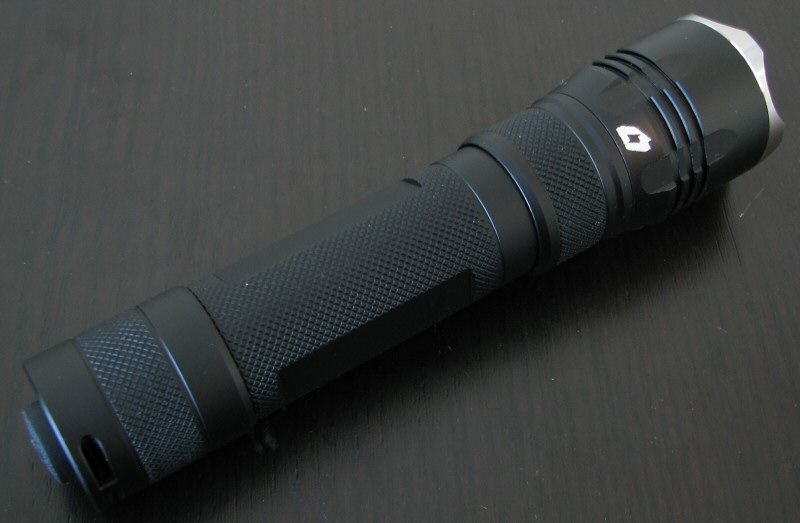
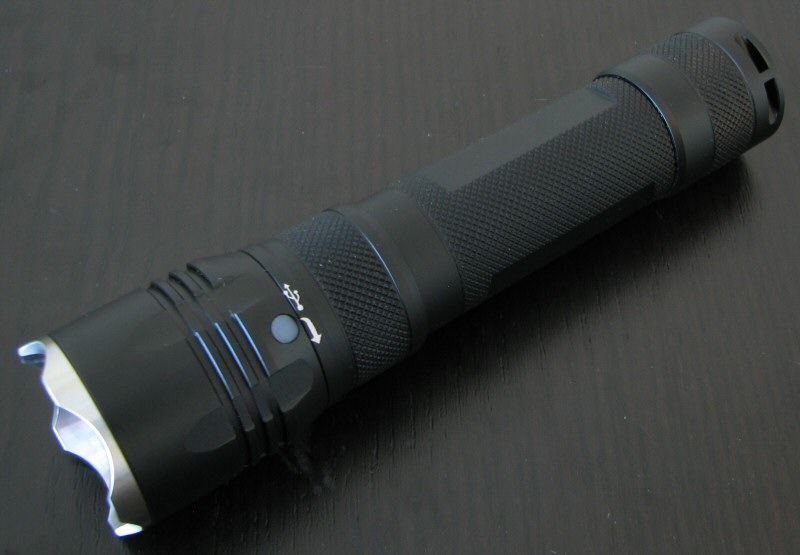
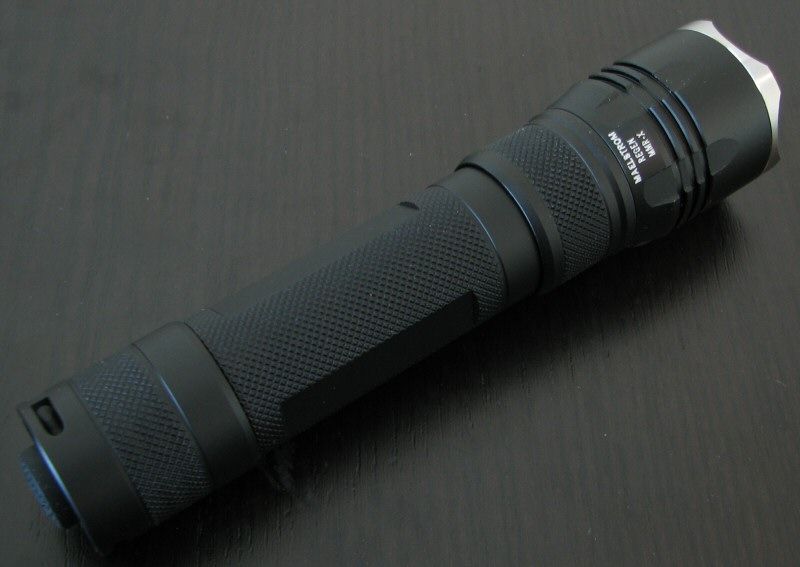
Foursevens has sent me their first integrated in-light charging 18650 model, the Maelstrom Regen MMR-X (XM-L2). The MMR-X features a number of selectable output modes, and USB charging for its custom 18650 cell.
As always, let's see what the official specs have to say ...
Manufacturer Reported Specifications:
(note: as always, these are simply what the manufacturer provides – scroll down to see my actual testing results).
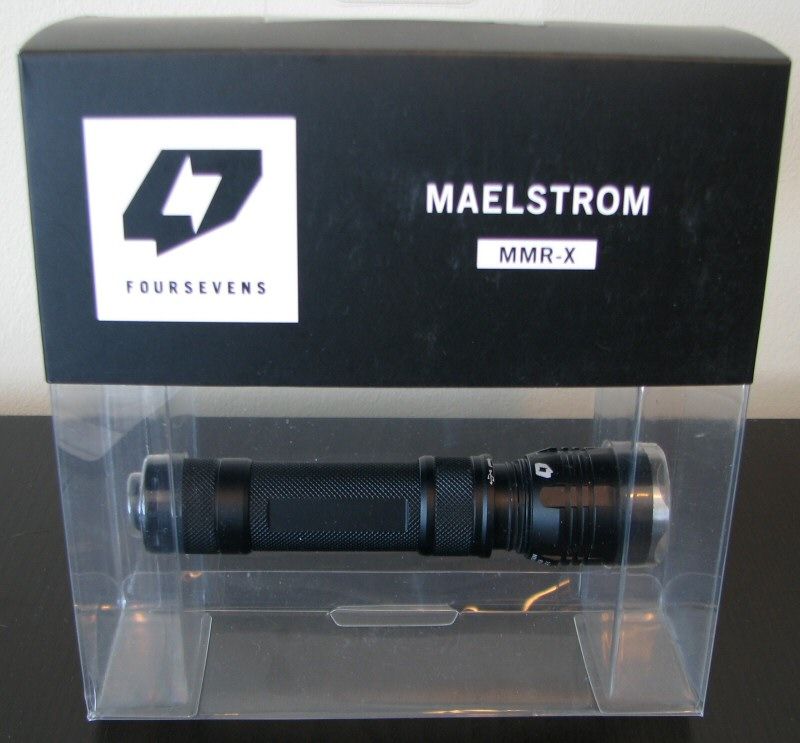
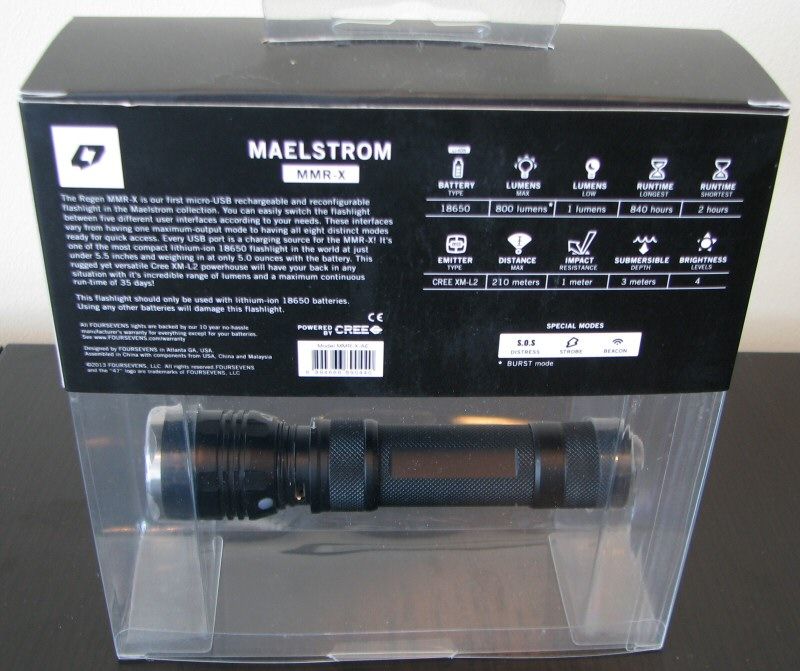
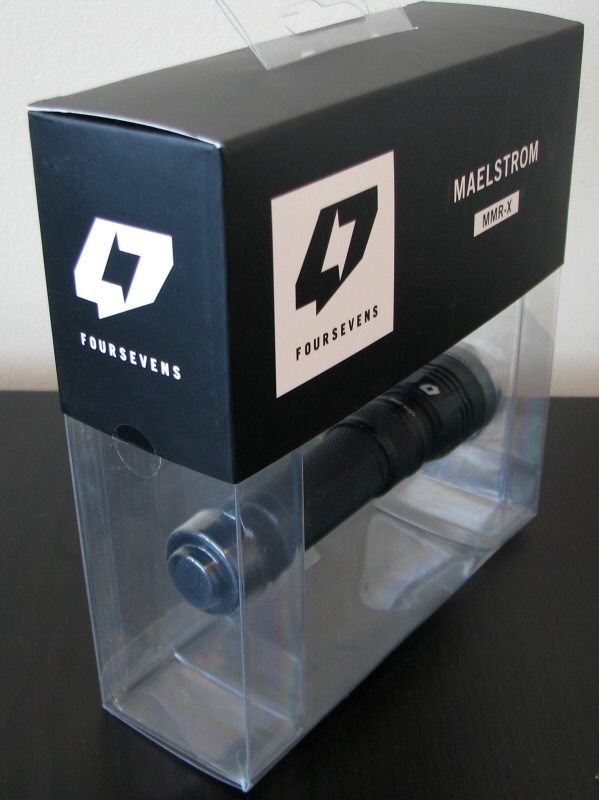
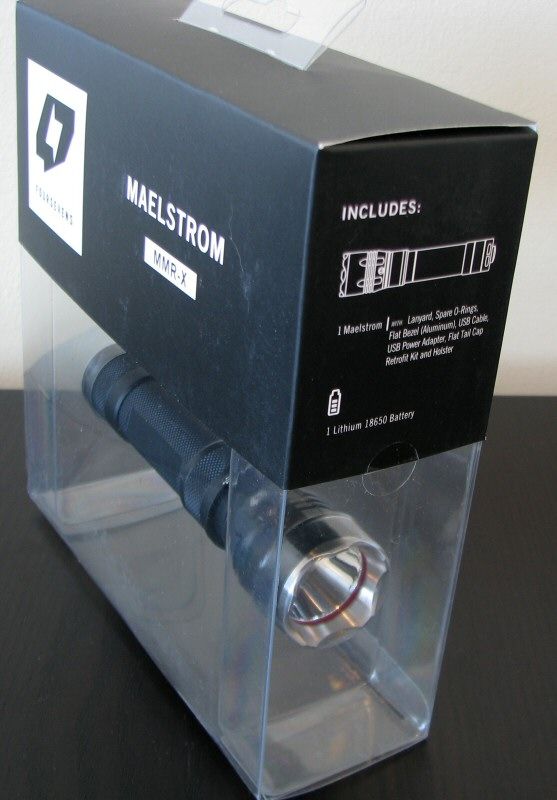
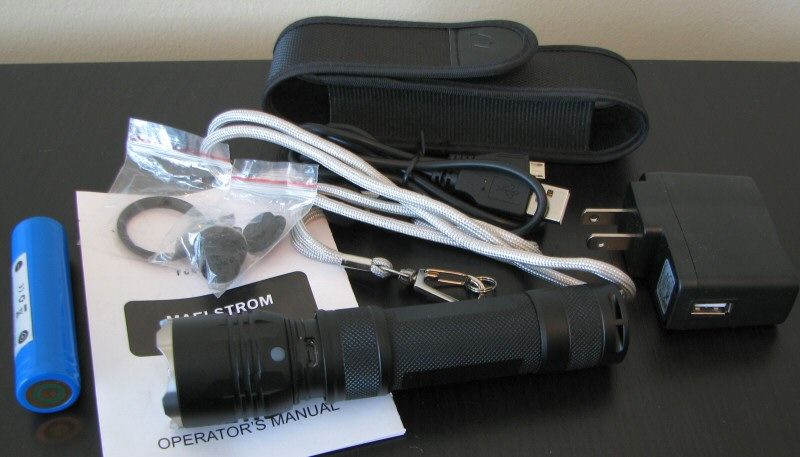
Packaging is the new presentation-style Foursevens display box. Inside, included with the light and custom 18650 are spare O-rings, good quality lanyard, holster, micro-USB charging cable, USB-AC adapter, spare forward clicky switch boot cover, spare reverse-clicky switch and low-profile boot cover, flat black aluminum bezel, and manual.
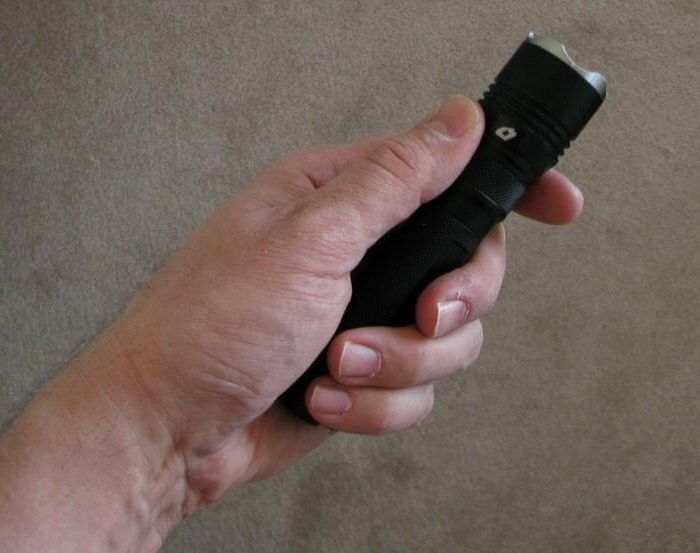
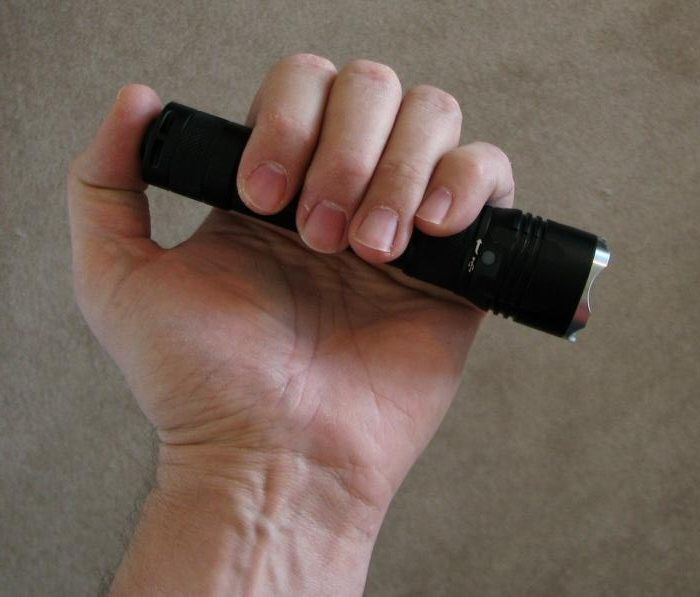
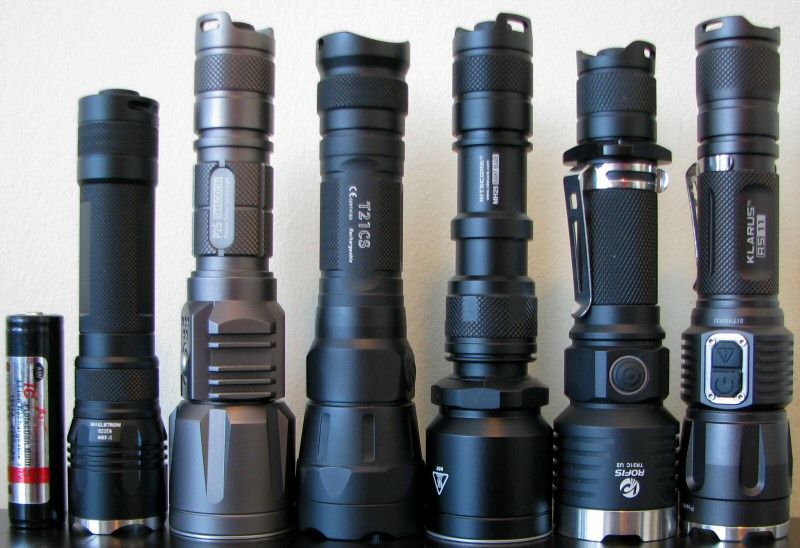
From left to right: AW Protected 18650 2300mAh; Foursevens MMR-X; Nitecore P25; Sunwayman T21CS; Nitecore MH25; Rofis TR31C; Klarus RS11.
All dimensions directly measured, and given with no batteries installed:
Foursevens MMR-X: Weight 90.8g, Weight (with 18650): 138.5g, Length: 138.6mm, Width (bezel): 31.5mm
Foursevens MMX: Weight 145.8g, Length: 153.3mm, Width (bezel): 38.7mm
Nitecore P25: Weight: 171.3g, Length: 160mm, Width (bezel): 40.0m
Nitecore MH25: Weight: 145.4g, Length: 160mm, Width (bezel): 40.0m
Olight M20S-X: Weight: 124.1g, Length: 145.4mm, Width: 35.5mm (head)
Klarus RS11: Weight 158.0g, Length: 160mm, Width (bezel) 34.9mm
Rofis TR31C: Weight: 180.7g, Length: 153.0mm, Width (bezel): 39.8mm
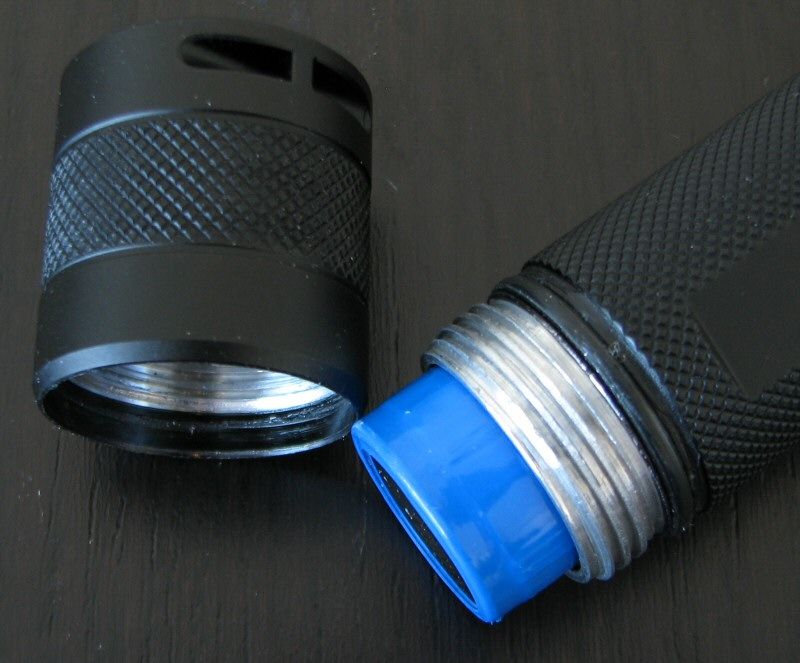
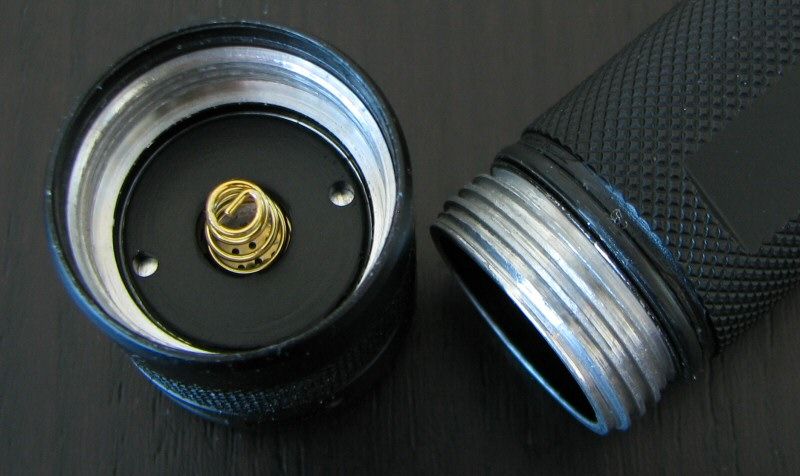
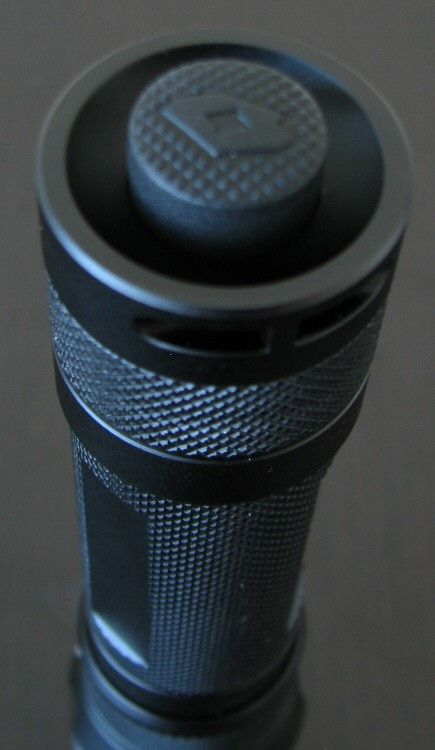
The MMR-X is pretty compact for an in-light charging 18650 flashlight. As with other Forusevens Maelstrom lights, anodizing is a shiny black finish, hard anodized (i.e., type III). Body labels are minimal, but bright white and clear. Knurling is fairly aggressive, and certainly helps with grip.
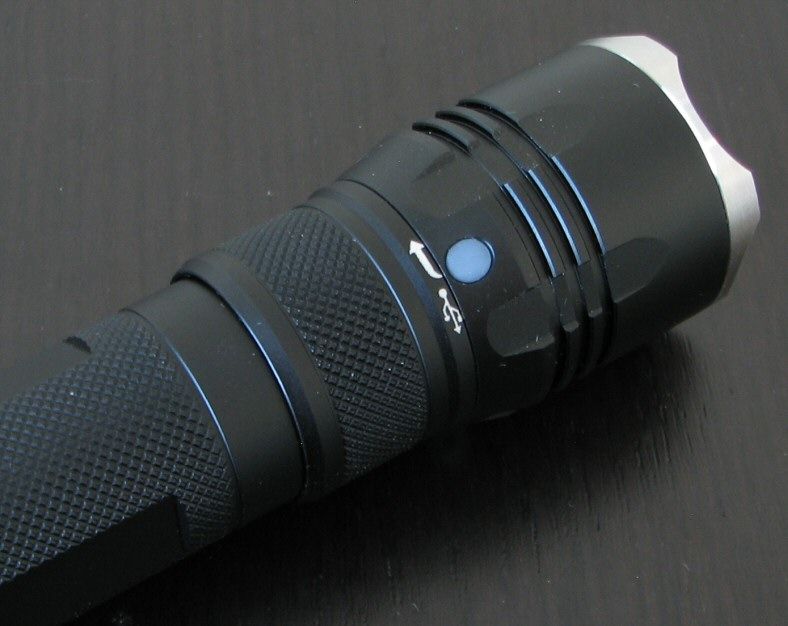
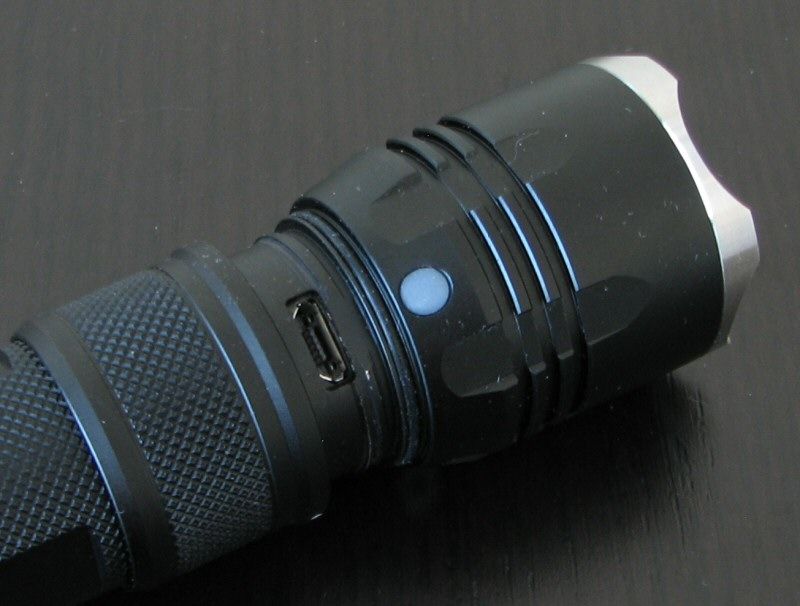
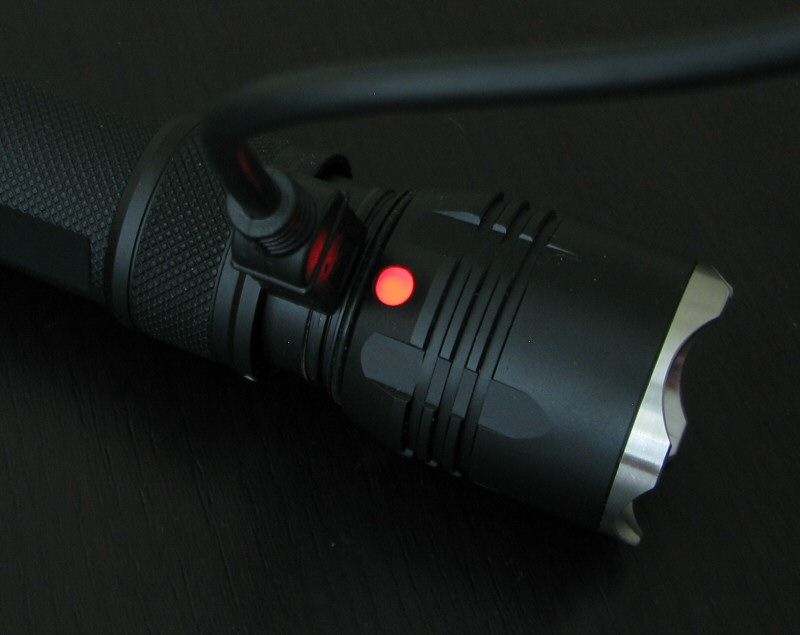
There is a "hidden" micro-USB charging port located right below the charging indicator LED. Simply unscrew the power cover and slide down. Resistance is firm, making it clear there is an o-ring in there for waterproofness (when closed).
Tailcap screw threads are square cut and not anodized (i.e., no tailcap lock-out is possible). This is not surprising though – all in-light charging models that I have seen leave the screw threads unanodized for the extra current path.
Charging the battery (and programming the light) is done by plugging the included cable into the micro-USB port of the light, and the other end into a standard computer USB port. An AC adapter is included, if you want to charge right from a wall outlet. The LED indicator above the charging port will glow red when charging, and green when fully charged. Scroll down to the UI section for an explanation as to how to program the light modes.
By default, the MMR-X uses the same type of protruding forward tactical clicky switch as seen on the MMX (i.e. press for momentary on, click for lock-on). This protruding clicky doesn't allow tailstanding. But Foursevens also includes a reverse-clicky switch, with a low profile boot cover. If you swap the switch, the light will now tailstand and function as a reverse clicky (i.e., press and release to activate, instead of just press).
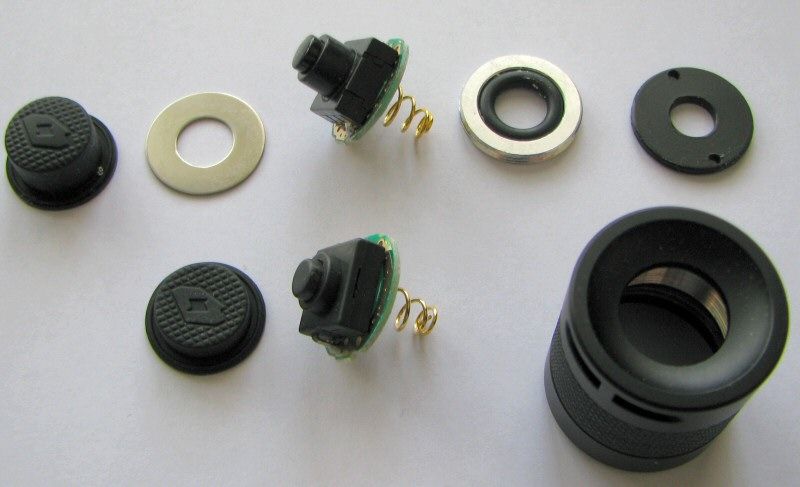
The top row above are the items included by default in the tailcap (i.e., the forward clicky switch), diassembled. The second row is the extra reverse-clicky switch included in the package. You swap the switches by unscrewing the plastic masking disc on the far right (I'll come back to this one), then unscrew the metal switch retaining ring (you can't see the indendations above, they are on the other side). Once you do this, everything else just falls out (so pay careful attention to the order of things!). Note that as always, you will need snap-ring pliers or a sturdy set of tweezers to unscrew the rings.
All mode switching is done by the tailcap clicky, but you can program the light to one of 5 mode-set states (one of which is single-mode Turbo). Please see my User Interface section for a discussion.
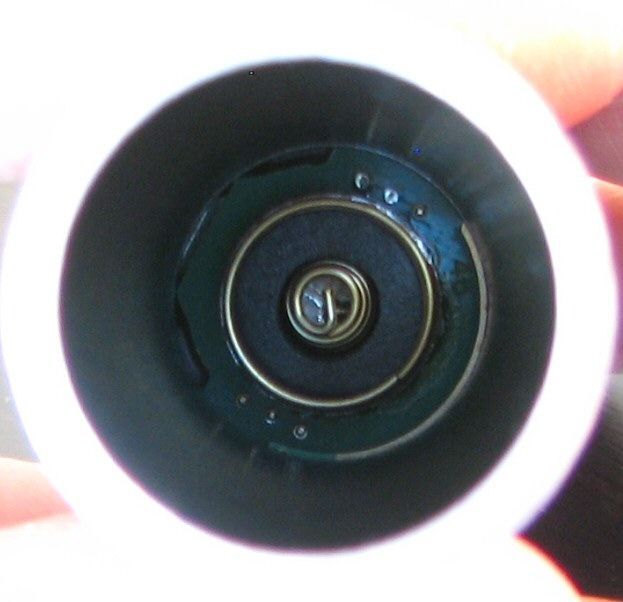
There are two springs on the contact board in the head, which are used for charging the custom 18650 cell (which contains positive and negative contacts on the head). Note that you can use a standard 18650 cell, but Foursevens recommends you unscrew the extra plastic masking disc in the tailcap and mount it in the head (to block the outer spring contact). This removes the risk of accidentally shorting flat-top cells. The plastic masking disc in the tailcap serves no other function - you can safely remove it from the tailcap at any time.
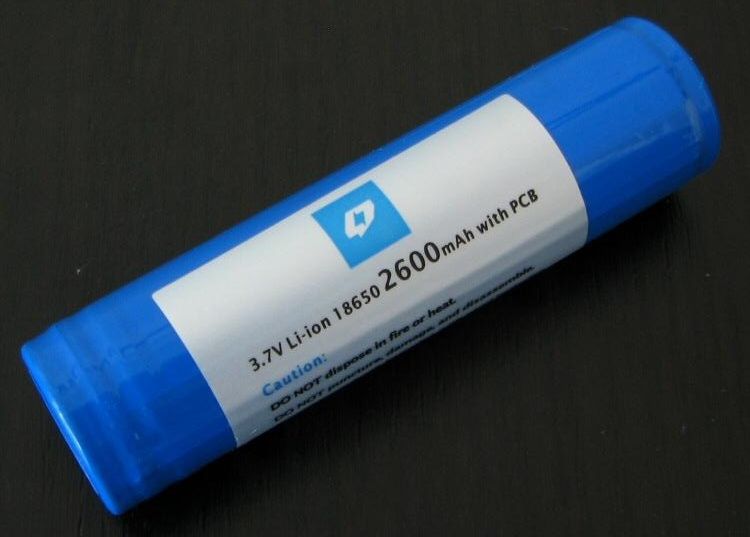
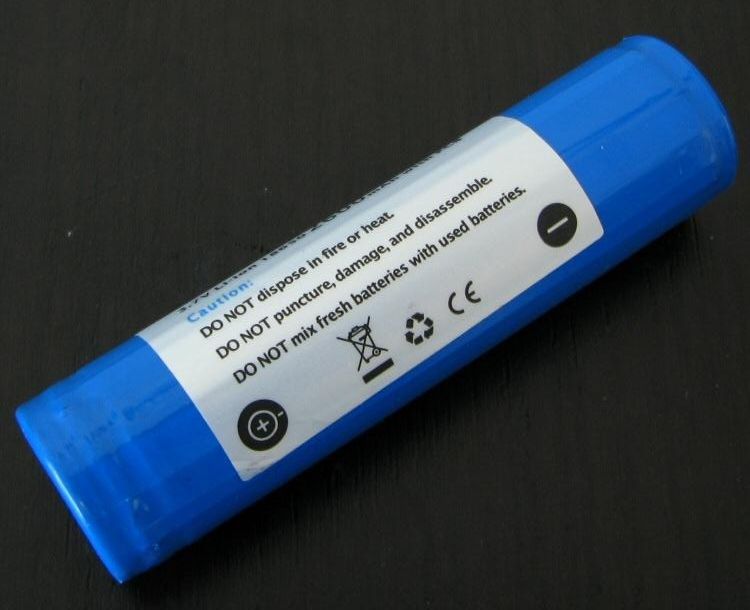
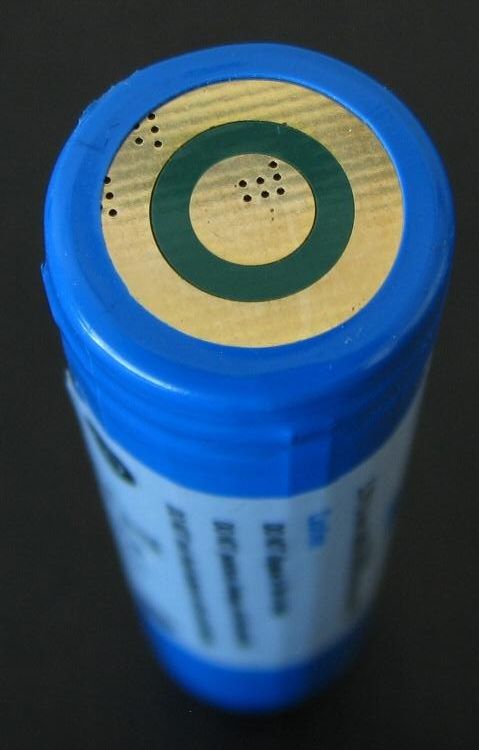

Again, note the custom 18650 design, with an inner and outer contact on the 18650 cell's "positive" terminal. Only the inner contact is actually positive, which is why you must use the plastic mask from the tailcap if you plan to use a regular 18650 cell inside the light.
The MMX comes with a crenalated stainless steel bezel by default (flat black aluminum one included in the package).
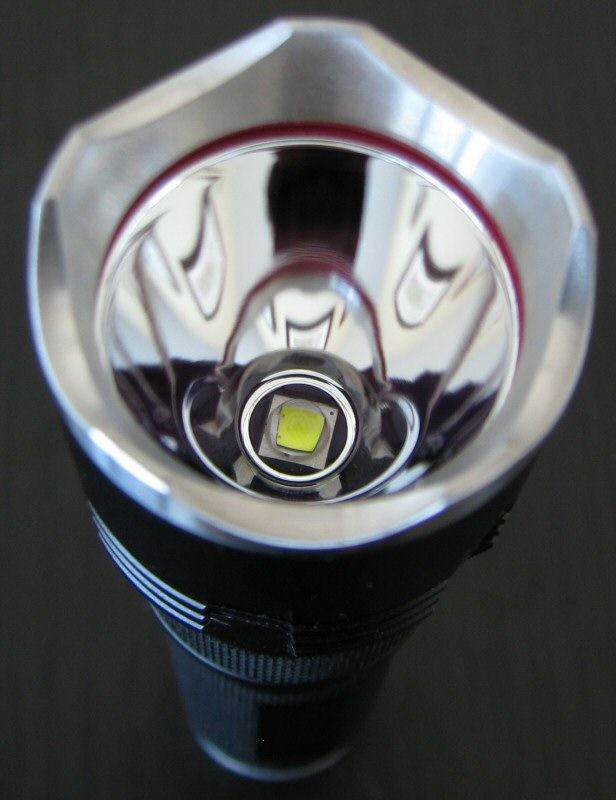
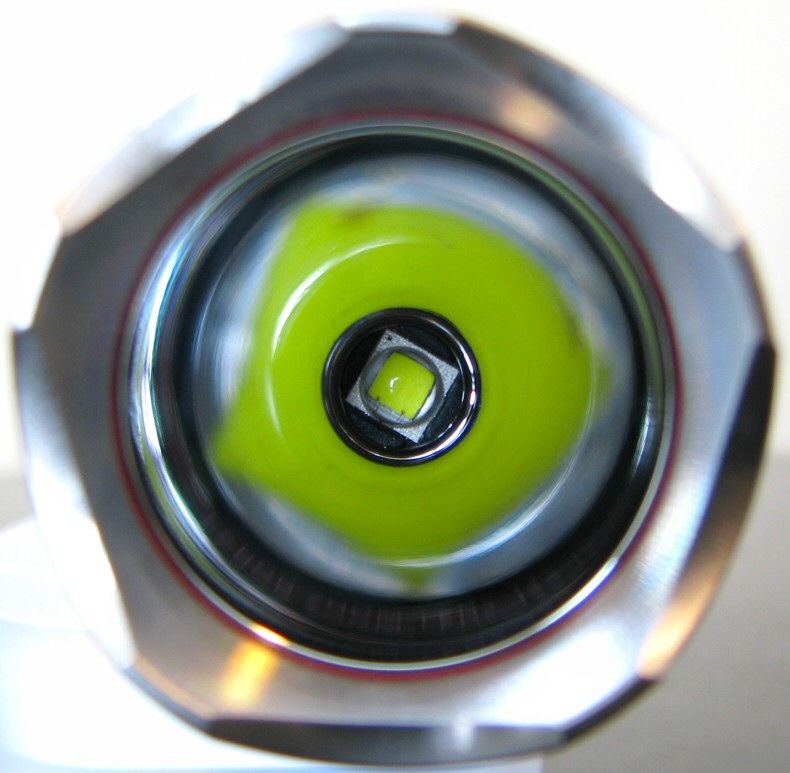
The overall head is not very large. Reflector is smooth, and fairly deep. Coupled with the XM-L2 cool white emitter (which was well centered on my sample), I would expect a fairly typical beam. Scroll down for beamshots.
User Interface
The MMR-X has a very distinctive interface, with the ability to program the number of output modes (from a set of five options).
Basic operation is very straight-forward: turn the light on/off by the tailcap clicky switch (press for momentary, click for locked-on).
The MMR-X has 8 potential output modes in total, split into five sets that you can program to select. The mode sequences of the five sets are as follows:
Set 1: Turbo only
Set 2: Turbo > Lo (default setting)
Set 3: Turbo > Strobe
Set 4: Lo > Hi > Turbo > Strobe
Set 5: Moonlight > Lo > Hi > Turbo > SOS > Strobe > Beacon Hi > Beacon Lo
Switching between five sets can only be done when the light is plugged into a USB charging port, with the custom 18650 installed and charging. To select your preferred set, click the switch on while charging (i.e., as if you were turning the light on). The light will flash 1-5 times (in a repeating loop) indicating the currently selected mode set. To switch modes, rapidly click the light off/on – it will advance to the next set. For example, by default the light is set to Set #2 (two flashes). To select Set #4, click the switch off/on twice – causing it to advance to four flashes.
When done programming, either click the light on at this point (it will come on at the lower level of the chosen Set), or wait until the flashing set indicator stops on its own. The light is now programmed to this Set. To change the Set, you will need to have the light plugged in again, with the custom 18650 installed.
Charging time using the supplied Foursevens 2600mAh cell was under 5 hours in my testing using a USB cable (sorry, I don't have more exact measure). I haven't tested the AC adapter to see if there is any difference in charging time.
Video:
For information on the light, including the build and user interface, please see my video overview:
Video was recorded in 720p, but YouTube typically defaults to 360p. Once the video is running, you can click on the configuration settings icon and select the higher 480p to 720p options. You can also run full-screen.
As with all my videos, I recommend you have annotations turned on. I commonly update the commentary with additional information or clarifications before publicly releasing the video.
PWM/Strobe
The MMR-X is current-controlled. There is no PWM, on any level.
However, I did observe circuit noise on the Lo/Hi levels (but not Moonlight or Turbo):
Noise:
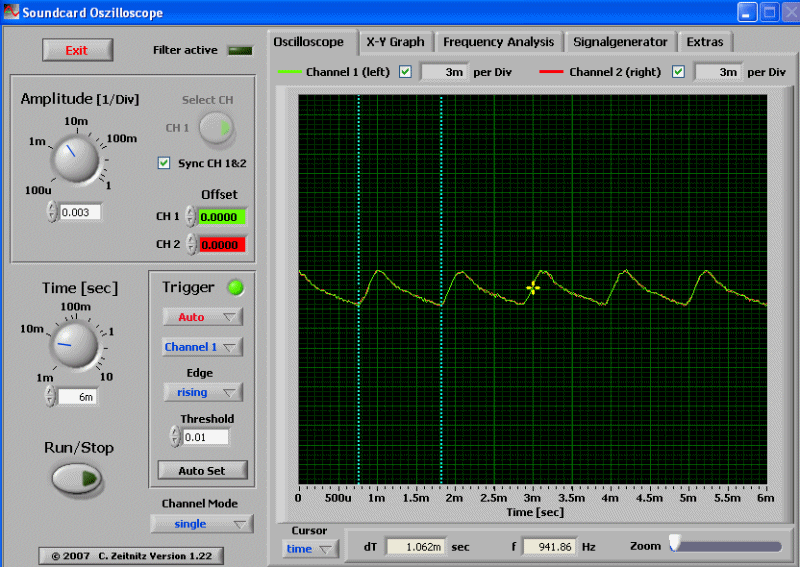
This reoccurring signal was around 940 Hz, but was not strong enough to be detected visually (even when shining on a fan). As is often the case with these kinds of circuit noise, it is only detectable with an oscilloscope. Rest assured, the beam was completely flicker-free at all levels.
Strobe
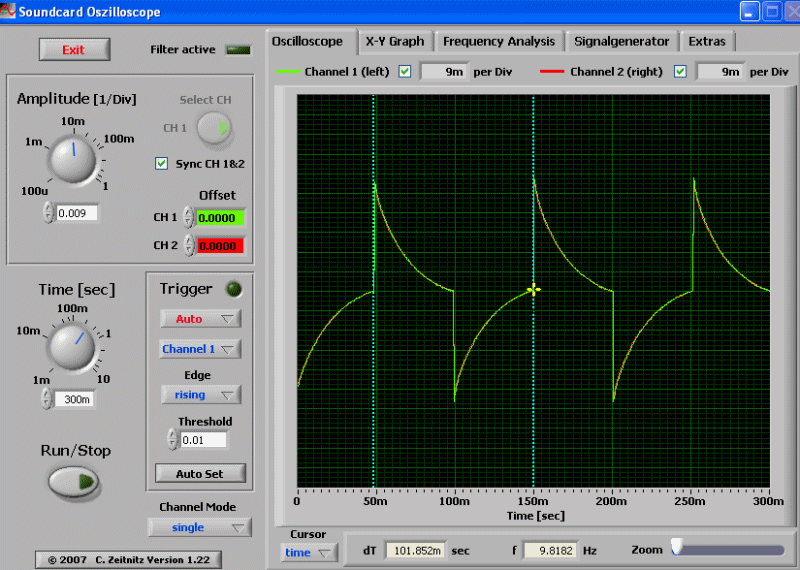
The strobe is a fairly typical fast "tactical" strobe, of 9.8Hz frequency.
SOS:
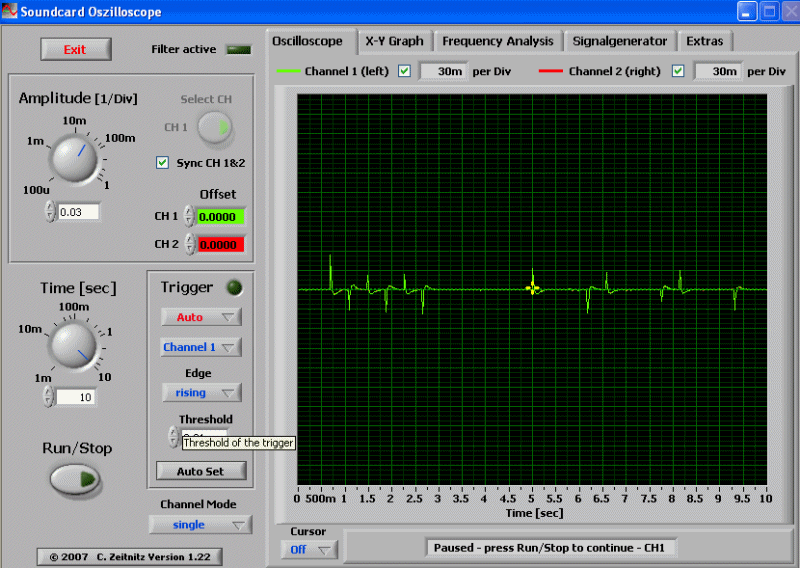
SOS mode is a fairly typical SOS sequence.
Beacon:
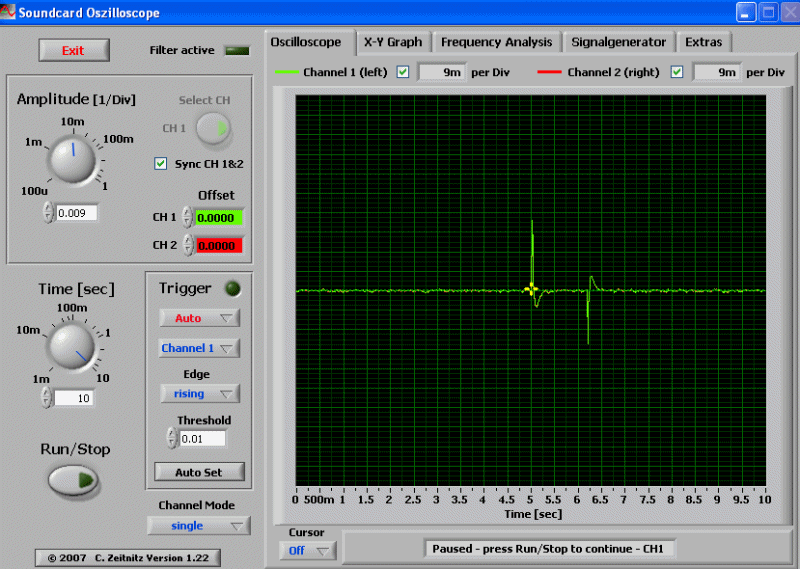
Beacon is a one second flash of Hi output, repeated every 12 secs or so.
Beamshots:
For white-wall beamshots below, all lights are on Max output on an AW protected 18650 battery. Lights are about ~0.75 meter from a white wall (with the camera ~1.25 meters back from the wall). Automatic white balance on the camera, to minimize tint differences.
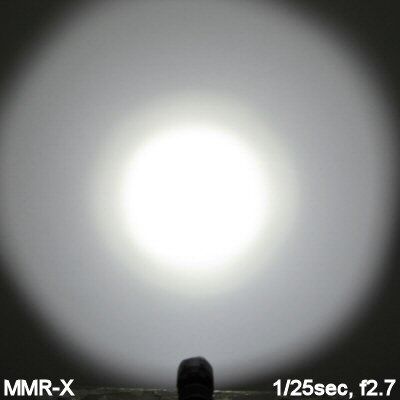
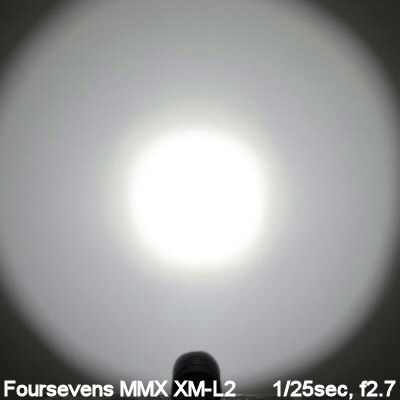
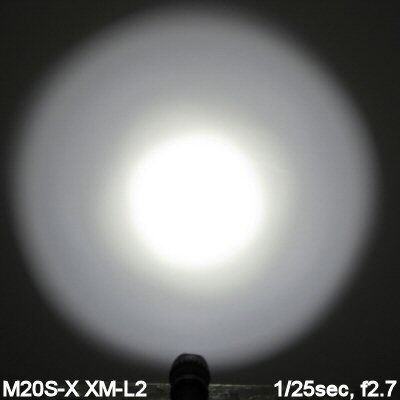
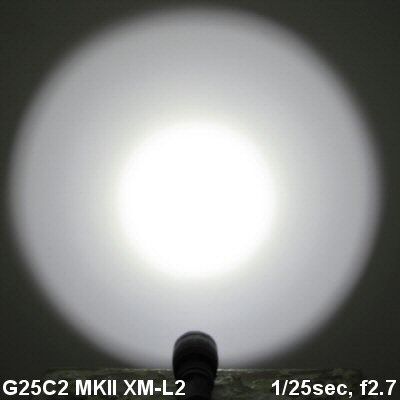
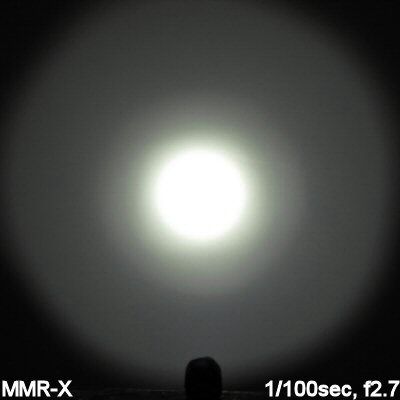
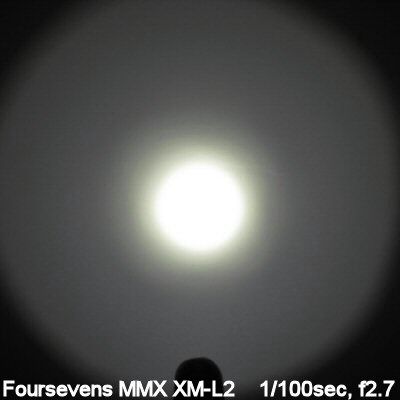
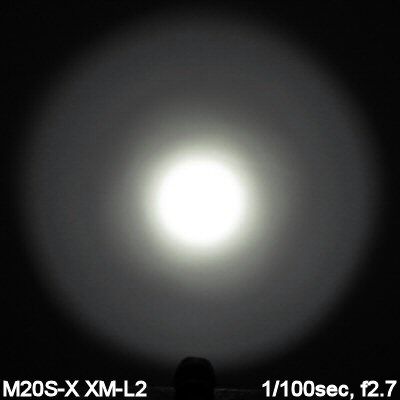
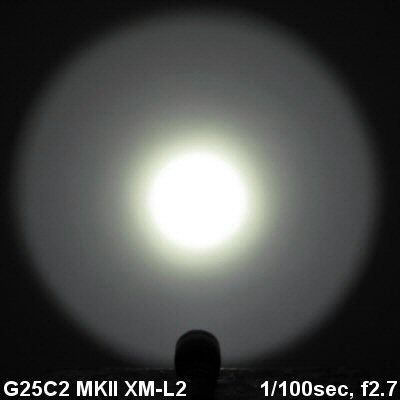
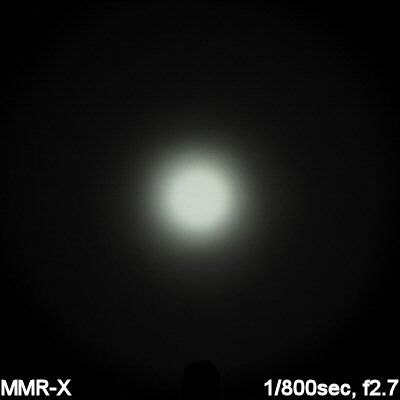
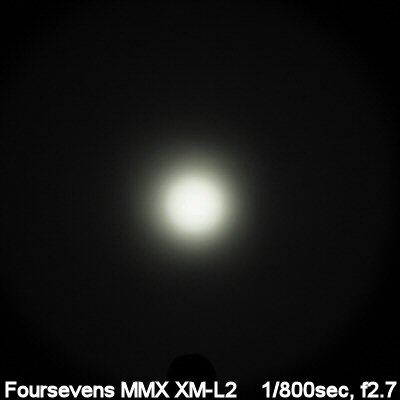
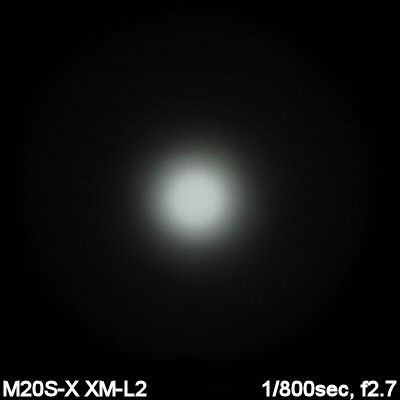
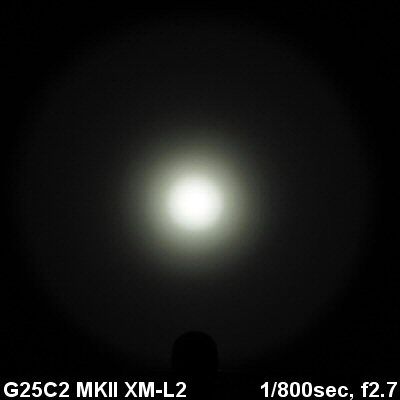
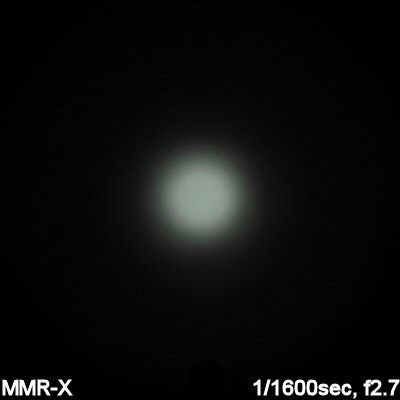
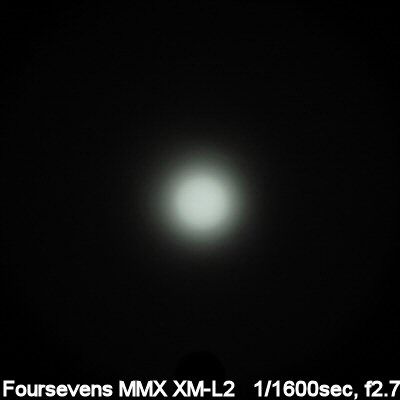
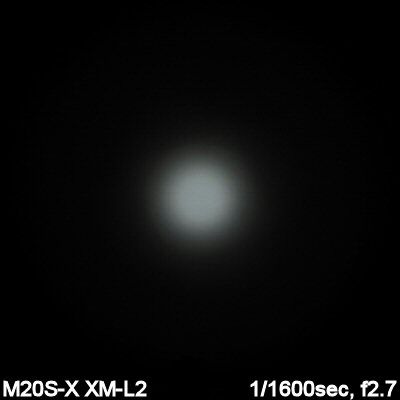
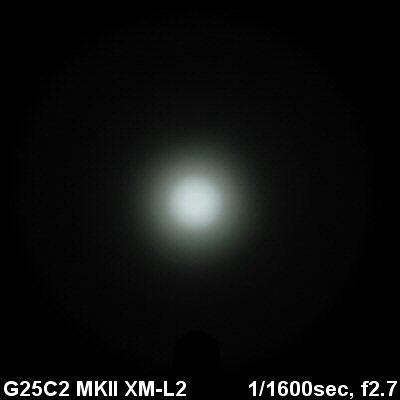
Beam pattern and overall output are what you would expect for a light this size. The MMR-X is generally similar to the Olight M20S-X in beam pattern, although the MMR-X has higher max output. That said, the MMR-X does not seem to quite as bright on Max as the specs would indicate. Scroll down to my output tables below for direct measures.
Testing Method:
All my output numbers are relative for my home-made light box setup, as described on my flashlightreviews.ca website. You can directly compare all my relative output values from different reviews - i.e. an output value of "10" in one graph is the same as "10" in another. All runtimes are done under a cooling fan, except for any extended run Lo/Min modes (i.e. >12 hours) which are done without cooling.
I have devised a method for converting my lightbox relative output values (ROV) to estimated Lumens. See my How to convert Selfbuilt's Lightbox values to Lumens thread for more info.
Throw/Output Summary Chart:
My summary tables are reported in a manner consistent with the ANSI FL-1 standard for flashlight testing. Please see http://www.flashlightreviews.ca/FL1.htm for a discussion, and a description of all the terms used in these tables. Effective July 2012, I have updated all my Peak Intensity/Beam Distance measures with a NIST-certified Extech EA31 lightmeter (orange highlights).
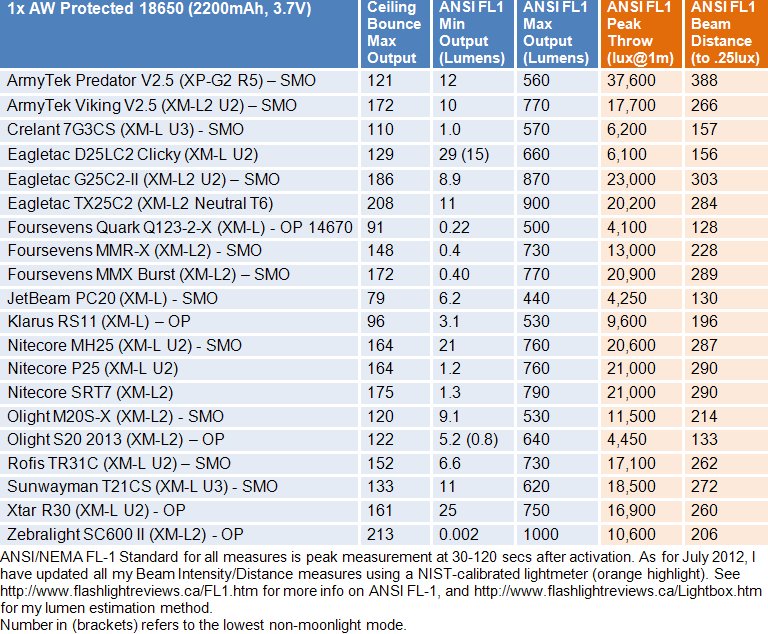
Consistent with what you saw in the beamshots, the MMR-X has a reasonable amount of output, with a generally balanced beam (i.e., not a great thrower). According to the specs, the MMR-X is a 1x18650-only light (i.e., 2xRCR or 2xCR123A does not appear to be supported).
Here are how all the levels compare to the official specs, in my lightbox:
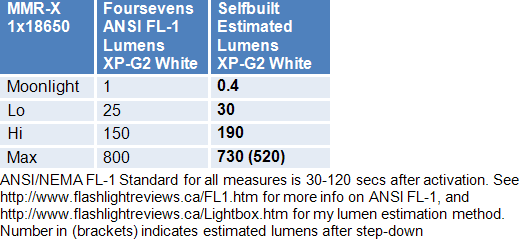
There is a generally good concordance between my estimated lumens and Foursevens published specs - although I should note that I have historically found Foursevens to be somewhat conservative in their output measures, relative to most other makers. Personally, I would normally take Foursevens specs as the minimum expected output, as opposed to the average expected output.
The one exception in my testing is the max output on the MMR-X – my lumen estimates are lower than the Foursevens specs. That has never happened before :thinking: Still, this max output level is quite consistent with other lights of comparable size (i.e., I would put max output in the typical range of lights in this class).
Output/Runtime Graphs:
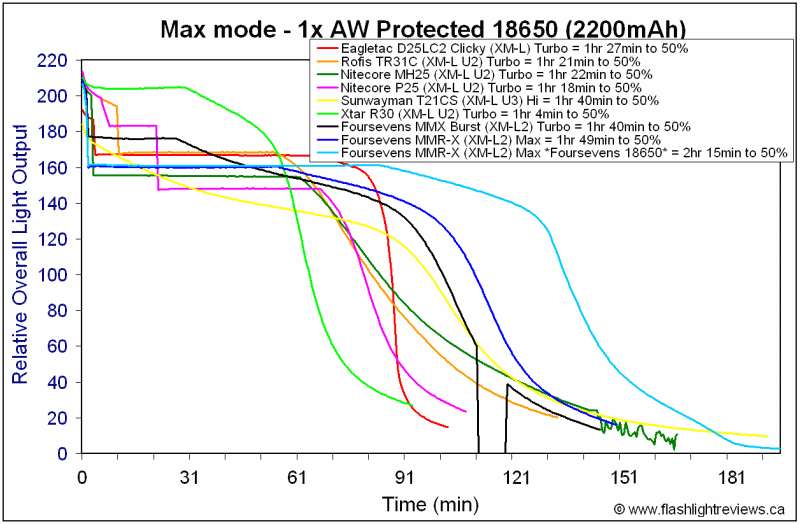
As you can see above, on Turbo the MMR-X steps down after about a minute and a half of runtime. I would estimate the revised output as ~520 lumens after step-down, which is higher than most lights that step-down. Regulation pattern is good at this reduced output, with the bundled 2600mAh Foursevens cell producing longer total runtime than my standard 2200mAh AW cells.
For the Max and Hi runtime tests below, I have used the bundled Foursevens 18650cell instead of my usual AW 18650 (to give you a better idea what to expect in stock form).
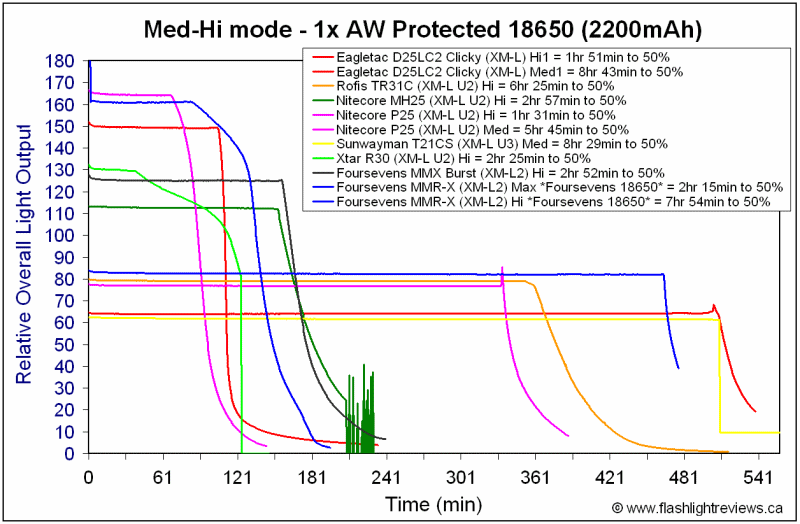
Overall efficiency and regulation are excellent on the MMR-X, at all levels tested. Note that the "Hi" level is really more a Med, compared to the terminology most makers use.
Potential Issues
2x battery sources are not supported – according to the specs, the MMR-X is 1x18650 only.
The output mode set can only be programmed when the light is charging, and with only the supplied Foursevens 18650 battery in place.
When using your own flat-top 18650 battery, ensure the masking contact disc (from the tailcap) is in place, to prevent accidental shorting.
The light can't tailstand.
Screw threads are not anodized (consistent with other lights in this in-light charging class), so no lock-out is possible.
Although the light has mode memory when in any of the multi-level sets, it takes about 4 secs in my testing for the light to memorize the level. If you click off-on any faster, it will advance to the next level.
Preliminary Observations
I have been reviewed an increasing number of 1x18650 lights that offer in-light charging solutions lately. This is first such model from Foursevens, and one that does a pretty good job of it.
Doing in-light charging well is not as easy as it seems. Foursevens' design is thoughtful, with a custom 18650 battery for charging (but support for standard 18650 cells without in-light charging). I like the overall size and build, including the use of a standard micro-USB port and cover (with USB cable and AC adapter included).
The ability to program the output mode set – with five sets of options available – gives the end user flexibility to customize the light to their preferences. One unusual feature is that programming can only be done during charging (with the bundled custom 18650 cell). :shrug: But this is not something you are likely to change too often on the fly anyway. And Foursevens includes a thoughtful package with a lot of extras – like the plastic masking disc (to prevent shorting when using standard 18650 cells), and the reverse-clicky switch with low profile boot cover (to allow tailstanding).
As typical with Foursevens, the output/runtime efficiency and regulation are both excellent. Of course, people looking for a barn-burner will need to look elsewhere (e.g., the MMX Burst that I recently reviewed). The MMR-X is a general purpose light, with a good range of output levels and a balanced profile between throw and spill. The light has an appropriate step-down on Turbo after a minute and half or so.
Of course, people looking for a barn-burner will need to look elsewhere (e.g., the MMX Burst that I recently reviewed). The MMR-X is a general purpose light, with a good range of output levels and a balanced profile between throw and spill. The light has an appropriate step-down on Turbo after a minute and half or so.
At the end of the day, "balanced" is probably a good way to describe the beam pattern and levels of this light. And that's not a bad thing, given the challenges some other in-light charging solutions have come across. Compromises are inevitable in this category, and the Foursevens decisions seem reasonable. The MMR-X even has a few surprises under the hood, such as the programmable output states - this is not something you find on most lights in this price point and category.
If you are in the market for 1x18650-only model with in-light charging, the MMR-X could be a good solution for you. :wave:
----
MMR-X was provided by Foursevens for this review.



Foursevens has sent me their first integrated in-light charging 18650 model, the Maelstrom Regen MMR-X (XM-L2). The MMR-X features a number of selectable output modes, and USB charging for its custom 18650 cell.
As always, let's see what the official specs have to say ...
Manufacturer Reported Specifications:
(note: as always, these are simply what the manufacturer provides – scroll down to see my actual testing results).
- LED: Cree XM-L2 LED Cool White
- First micro-USB rechargeable and reconfigurable flashlight in the Maelstrom collection
- Power source: 1x18650 2600mAh Li-ion
- Operating range: 3.0~4.2V
- Max:Burst at 800 lumens, 1 minute, then 400 lumens, 2 hrs
- High:150 lumens, 8 hrs
- Low: 25 lumens, 40 hrs
- Moonlight: 1 lumen, 35 days
- Strobe: 800 lumens at 10hz, 2 hrs
- SOS: 800 lumens, 4.5 hrs
- Beacon High: 800 lumens, 12 hrs
- Beacon Low: 150 lumens, 80 hrs
- Spot Beam Angle: 7 degrees; Diameter at 3 meters: 360mm
- Flood Beam Angle: 60 degrees; Diameter at 3 meters: 3.45 meters
- Reflector: Smooth highly tuned optical reflector
- Body Material Type-III hard-anodized aircraft-grade aluminum
- Bezel Material: Stainless steel strike-bezel (Flat black aluminum bezel also included)
- Lens Material: Optical-grade glass lens, sapphire coating, antireflective coating
- Dimensions: Length: 5.47 inches / Diameter: 1.24 inches / Weight: 3.26 oz
- Included Accessories: Holster, 18650 battery (2600mah), USB power adaptor (USA plug), USB cable, lanyard, spare orings, spare rubber boots, flat black bezel, parts for flat tailcap
- MSRP: ~$100





Packaging is the new presentation-style Foursevens display box. Inside, included with the light and custom 18650 are spare O-rings, good quality lanyard, holster, micro-USB charging cable, USB-AC adapter, spare forward clicky switch boot cover, spare reverse-clicky switch and low-profile boot cover, flat black aluminum bezel, and manual.



From left to right: AW Protected 18650 2300mAh; Foursevens MMR-X; Nitecore P25; Sunwayman T21CS; Nitecore MH25; Rofis TR31C; Klarus RS11.
All dimensions directly measured, and given with no batteries installed:
Foursevens MMR-X: Weight 90.8g, Weight (with 18650): 138.5g, Length: 138.6mm, Width (bezel): 31.5mm
Foursevens MMX: Weight 145.8g, Length: 153.3mm, Width (bezel): 38.7mm
Nitecore P25: Weight: 171.3g, Length: 160mm, Width (bezel): 40.0m
Nitecore MH25: Weight: 145.4g, Length: 160mm, Width (bezel): 40.0m
Olight M20S-X: Weight: 124.1g, Length: 145.4mm, Width: 35.5mm (head)
Klarus RS11: Weight 158.0g, Length: 160mm, Width (bezel) 34.9mm
Rofis TR31C: Weight: 180.7g, Length: 153.0mm, Width (bezel): 39.8mm



The MMR-X is pretty compact for an in-light charging 18650 flashlight. As with other Forusevens Maelstrom lights, anodizing is a shiny black finish, hard anodized (i.e., type III). Body labels are minimal, but bright white and clear. Knurling is fairly aggressive, and certainly helps with grip.



There is a "hidden" micro-USB charging port located right below the charging indicator LED. Simply unscrew the power cover and slide down. Resistance is firm, making it clear there is an o-ring in there for waterproofness (when closed).
Tailcap screw threads are square cut and not anodized (i.e., no tailcap lock-out is possible). This is not surprising though – all in-light charging models that I have seen leave the screw threads unanodized for the extra current path.
Charging the battery (and programming the light) is done by plugging the included cable into the micro-USB port of the light, and the other end into a standard computer USB port. An AC adapter is included, if you want to charge right from a wall outlet. The LED indicator above the charging port will glow red when charging, and green when fully charged. Scroll down to the UI section for an explanation as to how to program the light modes.
By default, the MMR-X uses the same type of protruding forward tactical clicky switch as seen on the MMX (i.e. press for momentary on, click for lock-on). This protruding clicky doesn't allow tailstanding. But Foursevens also includes a reverse-clicky switch, with a low profile boot cover. If you swap the switch, the light will now tailstand and function as a reverse clicky (i.e., press and release to activate, instead of just press).

The top row above are the items included by default in the tailcap (i.e., the forward clicky switch), diassembled. The second row is the extra reverse-clicky switch included in the package. You swap the switches by unscrewing the plastic masking disc on the far right (I'll come back to this one), then unscrew the metal switch retaining ring (you can't see the indendations above, they are on the other side). Once you do this, everything else just falls out (so pay careful attention to the order of things!). Note that as always, you will need snap-ring pliers or a sturdy set of tweezers to unscrew the rings.
All mode switching is done by the tailcap clicky, but you can program the light to one of 5 mode-set states (one of which is single-mode Turbo). Please see my User Interface section for a discussion.

There are two springs on the contact board in the head, which are used for charging the custom 18650 cell (which contains positive and negative contacts on the head). Note that you can use a standard 18650 cell, but Foursevens recommends you unscrew the extra plastic masking disc in the tailcap and mount it in the head (to block the outer spring contact). This removes the risk of accidentally shorting flat-top cells. The plastic masking disc in the tailcap serves no other function - you can safely remove it from the tailcap at any time.




Again, note the custom 18650 design, with an inner and outer contact on the 18650 cell's "positive" terminal. Only the inner contact is actually positive, which is why you must use the plastic mask from the tailcap if you plan to use a regular 18650 cell inside the light.
The MMX comes with a crenalated stainless steel bezel by default (flat black aluminum one included in the package).


The overall head is not very large. Reflector is smooth, and fairly deep. Coupled with the XM-L2 cool white emitter (which was well centered on my sample), I would expect a fairly typical beam. Scroll down for beamshots.
User Interface
The MMR-X has a very distinctive interface, with the ability to program the number of output modes (from a set of five options).
Basic operation is very straight-forward: turn the light on/off by the tailcap clicky switch (press for momentary, click for locked-on).
The MMR-X has 8 potential output modes in total, split into five sets that you can program to select. The mode sequences of the five sets are as follows:
Set 1: Turbo only
Set 2: Turbo > Lo (default setting)
Set 3: Turbo > Strobe
Set 4: Lo > Hi > Turbo > Strobe
Set 5: Moonlight > Lo > Hi > Turbo > SOS > Strobe > Beacon Hi > Beacon Lo
Switching between five sets can only be done when the light is plugged into a USB charging port, with the custom 18650 installed and charging. To select your preferred set, click the switch on while charging (i.e., as if you were turning the light on). The light will flash 1-5 times (in a repeating loop) indicating the currently selected mode set. To switch modes, rapidly click the light off/on – it will advance to the next set. For example, by default the light is set to Set #2 (two flashes). To select Set #4, click the switch off/on twice – causing it to advance to four flashes.
When done programming, either click the light on at this point (it will come on at the lower level of the chosen Set), or wait until the flashing set indicator stops on its own. The light is now programmed to this Set. To change the Set, you will need to have the light plugged in again, with the custom 18650 installed.
Charging time using the supplied Foursevens 2600mAh cell was under 5 hours in my testing using a USB cable (sorry, I don't have more exact measure). I haven't tested the AC adapter to see if there is any difference in charging time.
Video:
For information on the light, including the build and user interface, please see my video overview:
Video was recorded in 720p, but YouTube typically defaults to 360p. Once the video is running, you can click on the configuration settings icon and select the higher 480p to 720p options. You can also run full-screen.
As with all my videos, I recommend you have annotations turned on. I commonly update the commentary with additional information or clarifications before publicly releasing the video.
PWM/Strobe
The MMR-X is current-controlled. There is no PWM, on any level.
However, I did observe circuit noise on the Lo/Hi levels (but not Moonlight or Turbo):
Noise:

This reoccurring signal was around 940 Hz, but was not strong enough to be detected visually (even when shining on a fan). As is often the case with these kinds of circuit noise, it is only detectable with an oscilloscope. Rest assured, the beam was completely flicker-free at all levels.
Strobe

The strobe is a fairly typical fast "tactical" strobe, of 9.8Hz frequency.
SOS:

SOS mode is a fairly typical SOS sequence.
Beacon:
Beacon is a one second flash of Hi output, repeated every 12 secs or so.
Beamshots:
For white-wall beamshots below, all lights are on Max output on an AW protected 18650 battery. Lights are about ~0.75 meter from a white wall (with the camera ~1.25 meters back from the wall). Automatic white balance on the camera, to minimize tint differences.
















Beam pattern and overall output are what you would expect for a light this size. The MMR-X is generally similar to the Olight M20S-X in beam pattern, although the MMR-X has higher max output. That said, the MMR-X does not seem to quite as bright on Max as the specs would indicate. Scroll down to my output tables below for direct measures.
Testing Method:
All my output numbers are relative for my home-made light box setup, as described on my flashlightreviews.ca website. You can directly compare all my relative output values from different reviews - i.e. an output value of "10" in one graph is the same as "10" in another. All runtimes are done under a cooling fan, except for any extended run Lo/Min modes (i.e. >12 hours) which are done without cooling.
I have devised a method for converting my lightbox relative output values (ROV) to estimated Lumens. See my How to convert Selfbuilt's Lightbox values to Lumens thread for more info.
Throw/Output Summary Chart:
My summary tables are reported in a manner consistent with the ANSI FL-1 standard for flashlight testing. Please see http://www.flashlightreviews.ca/FL1.htm for a discussion, and a description of all the terms used in these tables. Effective July 2012, I have updated all my Peak Intensity/Beam Distance measures with a NIST-certified Extech EA31 lightmeter (orange highlights).

Consistent with what you saw in the beamshots, the MMR-X has a reasonable amount of output, with a generally balanced beam (i.e., not a great thrower). According to the specs, the MMR-X is a 1x18650-only light (i.e., 2xRCR or 2xCR123A does not appear to be supported).
Here are how all the levels compare to the official specs, in my lightbox:

There is a generally good concordance between my estimated lumens and Foursevens published specs - although I should note that I have historically found Foursevens to be somewhat conservative in their output measures, relative to most other makers. Personally, I would normally take Foursevens specs as the minimum expected output, as opposed to the average expected output.
The one exception in my testing is the max output on the MMR-X – my lumen estimates are lower than the Foursevens specs. That has never happened before :thinking: Still, this max output level is quite consistent with other lights of comparable size (i.e., I would put max output in the typical range of lights in this class).
Output/Runtime Graphs:

As you can see above, on Turbo the MMR-X steps down after about a minute and a half of runtime. I would estimate the revised output as ~520 lumens after step-down, which is higher than most lights that step-down. Regulation pattern is good at this reduced output, with the bundled 2600mAh Foursevens cell producing longer total runtime than my standard 2200mAh AW cells.
For the Max and Hi runtime tests below, I have used the bundled Foursevens 18650cell instead of my usual AW 18650 (to give you a better idea what to expect in stock form).

Overall efficiency and regulation are excellent on the MMR-X, at all levels tested. Note that the "Hi" level is really more a Med, compared to the terminology most makers use.
Potential Issues
2x battery sources are not supported – according to the specs, the MMR-X is 1x18650 only.
The output mode set can only be programmed when the light is charging, and with only the supplied Foursevens 18650 battery in place.
When using your own flat-top 18650 battery, ensure the masking contact disc (from the tailcap) is in place, to prevent accidental shorting.
The light can't tailstand.
Screw threads are not anodized (consistent with other lights in this in-light charging class), so no lock-out is possible.
Although the light has mode memory when in any of the multi-level sets, it takes about 4 secs in my testing for the light to memorize the level. If you click off-on any faster, it will advance to the next level.
Preliminary Observations
I have been reviewed an increasing number of 1x18650 lights that offer in-light charging solutions lately. This is first such model from Foursevens, and one that does a pretty good job of it.
Doing in-light charging well is not as easy as it seems. Foursevens' design is thoughtful, with a custom 18650 battery for charging (but support for standard 18650 cells without in-light charging). I like the overall size and build, including the use of a standard micro-USB port and cover (with USB cable and AC adapter included).
The ability to program the output mode set – with five sets of options available – gives the end user flexibility to customize the light to their preferences. One unusual feature is that programming can only be done during charging (with the bundled custom 18650 cell). :shrug: But this is not something you are likely to change too often on the fly anyway. And Foursevens includes a thoughtful package with a lot of extras – like the plastic masking disc (to prevent shorting when using standard 18650 cells), and the reverse-clicky switch with low profile boot cover (to allow tailstanding).
As typical with Foursevens, the output/runtime efficiency and regulation are both excellent.
At the end of the day, "balanced" is probably a good way to describe the beam pattern and levels of this light. And that's not a bad thing, given the challenges some other in-light charging solutions have come across. Compromises are inevitable in this category, and the Foursevens decisions seem reasonable. The MMR-X even has a few surprises under the hood, such as the programmable output states - this is not something you find on most lights in this price point and category.
If you are in the market for 1x18650-only model with in-light charging, the MMR-X could be a good solution for you. :wave:
----
MMR-X was provided by Foursevens for this review.
Last edited:


